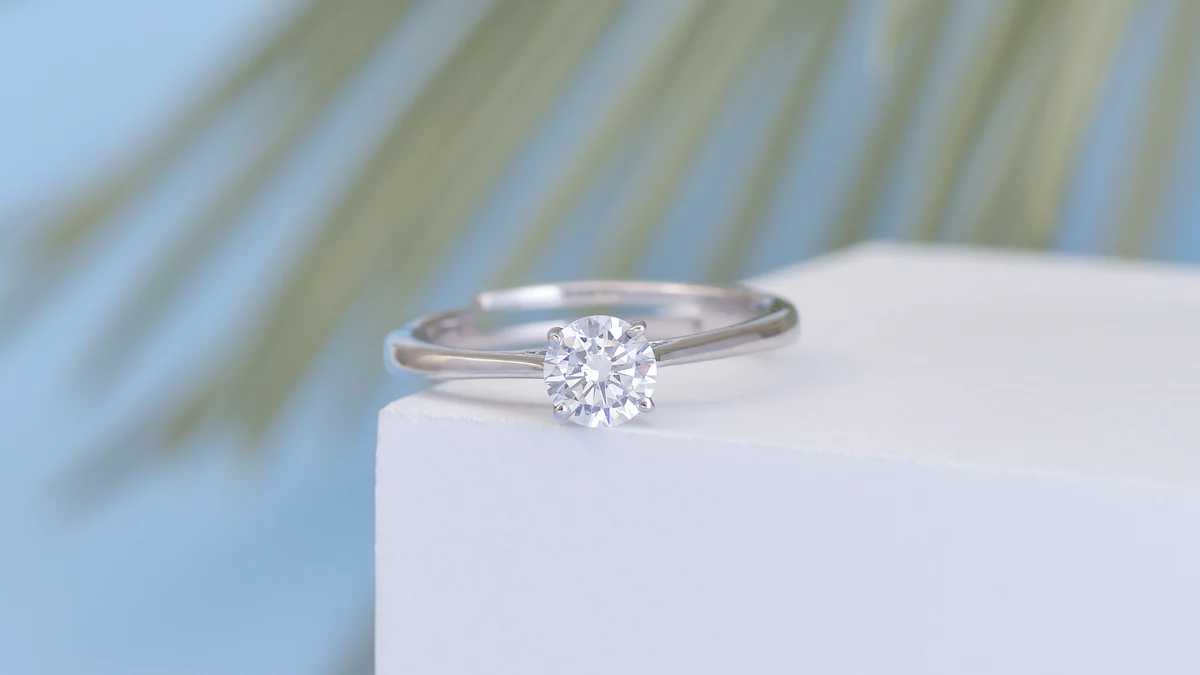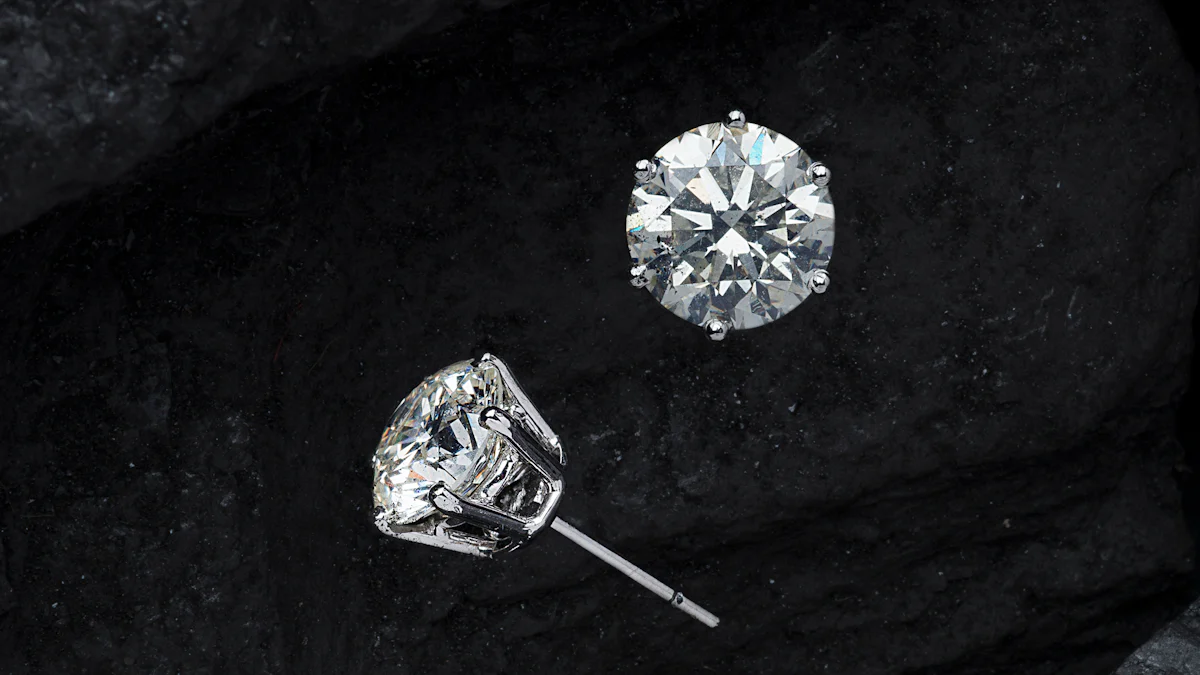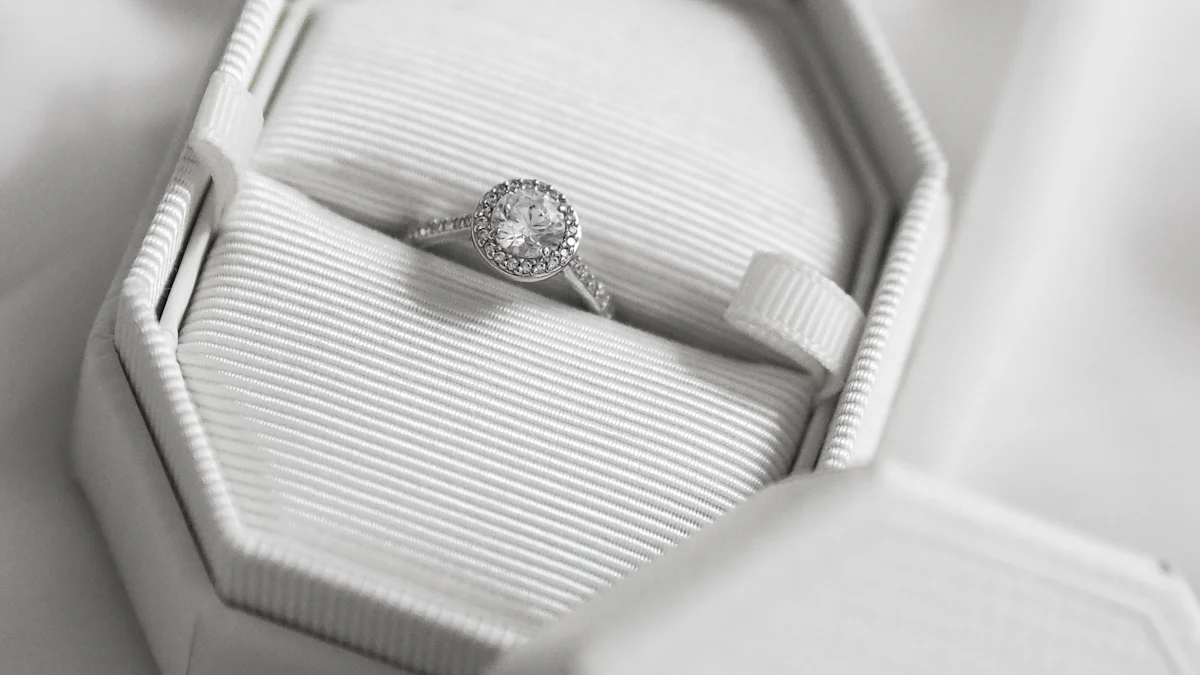VS2 Diamond vs SI1 Diamond Which is the Better Choice

Choosing between a diamond vs2 and an si1 depends on your priorities. VS2 diamonds typically have fewer visible inclusions, making them a cleaner option. However, SI1 diamonds often provide better value if inclusions remain invisible to the naked eye. For example, a 1-carat SI1 diamond costs around $7,400, while a VS2 diamond of the same size averages $8,300. Larger diamonds, like a 4-carat SI1, cost $84,000 compared to $116,000 for a VS2. Both options can be an eye clean diamond, but inspecting the stone ensures you make the right choice.
What Are VS2 and SI1 Diamonds?
Understanding Diamond Clarity Grades
Diamond clarity refers to the presence of internal or external imperfections, known as inclusions and blemishes. These imperfections are graded on a clarity grading scale, which helps you compare diamonds based on their visual purity. The Gemological Institute of America (GIA) uses this scale to assign clarity grades, ranging from Flawless (FL) to Included (I). VS2 and SI1 diamonds fall in the middle of this scale, offering a balance between quality and affordability.
What Does VS2 Mean?
VS2 clarity stands for Very Slightly Included. Diamonds with this grade have small inclusions that are difficult to detect without magnification. Under a 10x jeweler’s loupe, you can spot these inclusions, but they remain invisible to the naked eye. VS2 diamonds sit near the middle of the clarity grading scale, making them a high-quality choice. They appear nearly flawless under normal viewing conditions, offering a clean and brilliant look.
What Does SI1 Mean?
SI1 clarity, or Slightly Included to the 1st degree, indicates diamonds with inclusions that are more noticeable under magnification. Most SI1 diamonds are nearly eye-clean, meaning their imperfections are not visible without close inspection. However, the visibility of these inclusions depends on their size, color, and location. SI1 diamonds often provide excellent value, especially when their inclusions are minimal and strategically placed.
Clarity Comparison: Key Differences
Inclusions and Their Visibility
The inclusions in VS2 diamonds are typically small and hard to see without magnification. These diamonds may contain tiny crystals, feathers, or clouds, but their impact on appearance is minimal. In contrast, SI1 diamonds may have inclusions that are sometimes visible to the naked eye. These inclusions, such as crystals or feathers, are easier to spot under 10x magnification. If you want a diamond with fewer visible imperfections, VS2 diamonds are the better choice.
How Clarity Impacts Overall Appearance
The clarity grade of a diamond directly affects its visual appeal. VS2 diamonds usually look cleaner and brighter because their inclusions are less noticeable. SI1 diamonds, while still attractive, may appear slightly less pristine if their inclusions are prominent. However, many SI1 diamonds remain eye-clean, offering a balance between beauty and cost. When you compare diamonds, consider how clarity impacts their brilliance and overall presentation.
Visual Appearance: Eye-Clean Diamond Comparison

Are VS2 Diamonds Eye-Clean?
Why VS2 Diamonds Are Almost Always Eye-Clean
VS2 diamonds are highly regarded for their clarity. Most of these diamonds are considered eye-clean from a top-down perspective. This means you won’t notice any inclusions when viewing the diamond without magnification. Rarely, a VS2 diamond may have inclusions visible upon close inspection, but this is uncommon. The clarity grade ensures that imperfections are small and strategically placed, keeping them hidden from plain sight. If you want a diamond that looks flawless to the naked eye, a VS2 diamond is a reliable choice.
Are SI1 Diamonds Eye-Clean?
Factors That Determine Eye-Cleanliness in SI1 Diamonds
SI1 diamonds can also appear eye-clean, but several factors influence this. The size and placement of inclusions play a significant role. Smaller inclusions or those located near the edges are less noticeable. The diamond’s size also matters. Larger diamonds may make inclusions more visible, while smaller ones can hide them better. Viewing conditions, such as lighting and whether the diamond is wet or dry, can affect how inclusions appear. Individual perception varies too. Some people may notice imperfections more easily than others. These factors make it essential to evaluate each SI1 diamond individually.
Importance of Viewing the Diamond in Person or Online
When considering an SI1 diamond, inspecting it is crucial. High-quality images or videos can help you assess its clarity. Look for close-up views that show the diamond from different angles. If possible, view the diamond in person under various lighting conditions. This ensures you can confirm whether it meets your expectations for an eye-clean diamond. Working with a trusted jeweler who provides detailed visuals and clarity information can make this process easier. By taking these steps, you can confidently choose an SI1 diamond that offers excellent value and beauty.
Price Comparison Between VS2 and SI1 Diamonds

Cost Differences
Why VS2 Diamonds Are More Expensive
VS2 diamonds are priced higher due to their superior clarity grade. These diamonds have fewer inclusions, which enhances their visual appeal and perceived value. For example, a 1-carat round diamond with VS2 clarity costs approximately $8,300, while a similar SI1 diamond is priced around $7,400. This $900 difference reflects the market's preference for diamonds with fewer visible imperfections. The clarity grades directly influence the diamond price calculator, as higher clarity grades like VS2 clarity command a premium. If you prioritize a diamond that looks nearly flawless to the naked eye, the additional cost of VS2 diamonds may be worth it.
How SI1 Diamonds Can Offer Better Value
SI1 diamonds provide an excellent price advantage for buyers seeking affordability without sacrificing beauty. These diamonds are often 25% cheaper than VS1 diamonds with similar characteristics. For instance, choosing an SI1 diamond over a VS1 can save you $750. Many SI1 diamonds appear eye-clean, making them a practical choice for a diamond engagement ring. By selecting an SI1 clarity grade, you can get the best diamond for your money while still enjoying a stunning stone. This makes SI1 diamonds a popular option for those balancing quality and cost.
Balancing Clarity and Budget
When to Choose VS2 for Peace of Mind
VS2 diamonds are ideal if you want peace of mind regarding clarity. These diamonds are typically eye-clean and look identical to flawless diamonds under normal viewing conditions. They offer a balance of clarity, beauty, and affordability, making them a reliable choice. If you prefer a diamond that ensures minimal inclusions and long-term satisfaction, VS2 diamonds are worth the investment. They allow you to enjoy a high-quality diamond without paying the premium for higher clarity grades.
When to Choose SI1 for Cost Savings
SI1 diamonds are the best option when you want to maximize value. They allow you to allocate your money toward other factors, such as carat weight or cut, which significantly impact a diamond's brilliance. Shopping online can help you find SI1 diamonds at the best available prices, as online retailers often have lower overhead costs. Additionally, choosing a less expensive diamond shape, like an oval-cut, can further stretch your budget. SI1 diamonds are an excellent choice for buyers who want affordability without compromising on beauty.
Factors to Consider When Choosing a Diamond
Diamond Size and Shape
How Larger Diamonds Impact Clarity Visibility
The size of a diamond significantly affects how visible inclusions appear. In SI1 diamonds, inclusions become more noticeable in larger stones, especially those over 4 carats. Smaller SI1 diamonds, such as a 0.7-carat stone, are less likely to show visible imperfections. If you are considering a larger diamond, choosing a higher clarity grade like VS2 clarity is advisable. Larger diamonds have a greater surface area, making inclusions easier to detect with the naked eye.
In diamonds of high carat weight, inclusions are more visible to normal vision. The larger the diamond, the greater the surface area at which defects can be detected.
Shapes That Hide Inclusions Better
The shape of a diamond also influences how inclusions are perceived. Brilliant cuts, such as round or princess shapes, tend to hide inclusions better due to their faceting patterns. Step cuts, like emerald or Asscher shapes, have larger open facets that make inclusions more noticeable. For SI1 diamonds, choosing a brilliant cut can help minimize the visibility of imperfections. The table below highlights clarity recommendations for different shapes:
| Diamond Shape | Clarity Recommendation | |------------------------------|-------------------------| | Round cut, princess cut | SI1 or VS2 | | Oval cut, cushion cut | SI1 or SI2 | | Heart shaped | SI1 or VS2 | | Asscher, emerald, baguette | VS2 |
Viewing the Diamond Before Purchase
Importance of High-Quality Images or Videos
Viewing high-quality images or videos of a diamond before purchasing is essential. These visuals help you determine how eye-clean a diamond is and provide insights into its brilliance, scintillation, and sparkle. Although magnified, these videos reflect the diamond's real-life performance. They allow you to assess whether the diamond meets your expectations for clarity and overall appearance.
Working with a Trusted Jeweler
Collaborating with a trusted jeweler ensures you make an informed decision. A reputable jeweler provides detailed images, videos, and clarity information for each diamond. This transparency helps you compare diamonds effectively and avoid potential disappointment. When buying online, ensure the jeweler offers a return policy and certification to verify the diamond's legitimacy.
Personal Preferences and Priorities
Eye-Cleanliness vs. Budget
Your personal preferences play a crucial role in choosing between VS2 and SI1 diamonds. If you prioritize a diamond that looks flawless to the naked eye, VS2 diamonds are a practical choice. Their minor inclusions do not detract from their beauty when set in jewelry. However, if you are willing to compromise slightly on clarity to fit your budget or increase carat weight, SI1 clarity diamonds offer excellent value.
Long-Term Satisfaction with Your Choice
Long-term satisfaction depends on balancing clarity, size, and budget. A VS2 diamond provides peace of mind with its nearly flawless appearance. On the other hand, an SI1 diamond allows you to allocate more funds toward other factors, such as carat weight or cut. Consider what matters most to you—whether it’s a larger diamond, a specific shape, or a cleaner look—and choose accordingly.
Certification and Trustworthiness
Why GIA Certification Matters
Ensuring Accurate Clarity Grading
When purchasing diamonds, certification plays a crucial role in ensuring you get what you pay for. The Gemological Institute of America (GIA) sets the gold standard for diamond grading. Established in 1931, GIA operates as a non-profit organization and is renowned for its consistent and objective grading practices. It introduced the 4Cs system—cut, color, clarity, and carat weight—which is now universally recognized.
GIA certification guarantees accurate clarity grading for both vs2 and si1 diamonds. Their rigorous testing process involves advanced technology and highly trained gemologists. This ensures that the clarity grade assigned to your diamond is reliable and trustworthy.
The GIA's meticulous approach ensures that all diamonds receiving their certification undergo rigorous testing. They utilize advanced technology and experienced gemologists who follow strict protocols. The result? A grading report that consumers and professionals alike can trust.
With a GIA certificate, you gain confidence in your purchase. It protects you from overpaying for a diamond with inflated clarity grades and ensures the diamond’s quality matches its description. Additionally, diamonds with GIA certification often hold higher resale value due to their verified authenticity.
Avoiding Misleading or Inflated Grades
Non-certified diamonds or those graded by less reputable labs can lead to significant risks. Without a trusted certification, you may unknowingly purchase a diamond with inflated clarity grades. This can result in overpaying or facing challenges when reselling the diamond. GIA certification eliminates these concerns by providing clear, unbiased, and consistent grading reports. It ensures that both vs2 clarity and si1 clarity diamonds meet the standards they claim.
Other Trusted Certification Bodies
AGS and Their Grading Standards
While GIA is the most recognized, other certification bodies like the American Gem Society (AGS) also maintain high standards. AGS, founded in 1934, promotes ethical practices and provides reliable grading. It uses a performance-based grading system, including 3D analysis and ray tracing, to assess diamond cuts. This differs from GIA’s proportion-based methodology. Both organizations use similar methods for grading color and clarity, ensuring consistency in these aspects.
| Aspect | GIA | AGS | |----------------------|------------------------------------------|------------------------------------------| | Founding Purpose | Research and knowledge for the diamond trade | Organization of retail jewelers with a code of ethics | | Cut Grading | Overall cut assessment only for round diamonds | Comprehensive cut grading for multiple shapes | | Grading Methodology | Proportion-based with observational inspection | Performance-based with 3-D analysis and ray tracing | | Color and Clarity | Similar methodology to AGS | Similar methodology to GIA |
Avoiding Non-Certified Diamonds
Purchasing non-certified diamonds poses significant risks. Without certification, you cannot verify the diamond’s authenticity or clarity grade. This increases the likelihood of supporting unethical practices or overpaying for a lower-quality diamond. Non-certified diamonds often come with vague descriptions, making it difficult to assess their true value. Additionally, they may depreciate significantly in resale value. To avoid these pitfalls, always choose diamonds certified by reputable bodies like GIA or AGS.
Tip: Always ask for a certificate from a trusted lab when buying diamonds. This ensures you receive a diamond that matches its advertised quality.
VS2 diamonds work best if you value clarity and want peace of mind. These diamonds typically appear flawless to the naked eye, making them a dependable choice. On the other hand, si1 diamonds offer excellent value if you carefully inspect them for eye cleanliness. Many si1 diamonds have inclusions that remain hidden within the facets or appear transparent, making them visually appealing.
Misconceptions often arise when comparing vs2 clarity and si1 clarity. Some believe si1 diamonds are poor investments due to inclusions, but many are eye clean diamonds. Others assume vs2 diamonds are always superior, though the differences may not be noticeable without magnification.
When deciding between a diamond vs2 and si1, consider size, shape, and certification. Larger diamonds may reveal inclusions more easily, so clarity becomes more critical. Ultimately, your choice depends on your budget and priorities. Whether you choose vs2 diamonds for their pristine appearance or si1 clarity for cost savings, both options can provide stunning results.
FAQ
What is the main difference between VS2 and SI1 diamonds?
VS2 diamonds have fewer and smaller inclusions, making them cleaner to the naked eye. SI1 diamonds may have visible inclusions but often offer better value. Your choice depends on your clarity preference and budget.
Are SI1 diamonds always eye-clean?
Not always. SI1 diamonds can appear eye-clean if their inclusions are small or well-placed. Viewing the diamond in person or through high-quality images helps you confirm its appearance.
Should you choose VS2 diamonds for larger carat sizes?
Yes, larger diamonds make inclusions more noticeable. A VS2 diamond ensures better clarity for stones over 2 carats, providing a cleaner look without visible imperfections.
Do diamond shapes affect clarity visibility?
Yes, shapes like round or princess cuts hide inclusions better due to their faceting. Step cuts like emerald or Asscher make inclusions more visible, so higher clarity grades like VS2 work better for these shapes.
Why is GIA certification important when buying diamonds?
GIA certification ensures accurate clarity grading and protects you from inflated grades. It guarantees the diamond’s quality matches its description, giving you confidence in your purchase.
See Also
A Guide to Diamond Cuts for Engagement Rings
Tips for Selecting the Ideal Women's Diamond Ring
Comparing Prices of Diamond Eternity Rings

